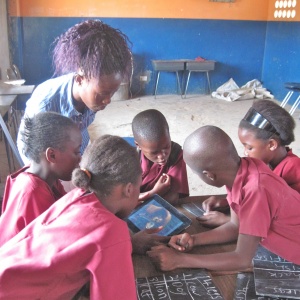Introduction to OER4Schools
| Resource details | |
| Title | A session template for making your own sessions |
| Topic | |
| Teaching approach | |
| Learning Objectives | |
| Format / structure | |
| Subject | |
| Age of students / grade | |
| Table of contents | |
| Additional Resources/material needed | |
| Useful information | |
| Related ORBIT Wiki Resources | |
| Other (e.g. time frame) | |
| Files and resources to view and download | |
| Acknowledgement | This resource is part of the OER4Schools programme. |
| License | |
Learning intentions and objectives.
In this session you will learn about:
- how to make your own session.
Success criteria.
To meet the learning intentions you will:
- make your own session.
ICT components.
The ICT components you will focus on are
- nothing in particular, but as you use the template, you can say here what ICTs will be used, and what participants learn.
Classroom based activities (with your students, after this session):
- you will do the following with your students in class
Resources needed.
If special resources are needed, list them here!
Facilitator notes
Review of follow up activities
If you are running a professional learning programme which follows these sessions in sequence, then you should do the review of follow-up activities relating to the (Category:OER4S CPD). The 'review of follow-up activities' for that session is available, and also shown below in the session text. However, if you are following selected sessions in a different order, then you should use the reflection appropriate to the previous session you did.
The review of the follow-up activities for this session (to be done at the start of the next session) is available here.
There is no review of follow-up activities from last session available. You can go to the previous session () and.
At the beginning of each session, you should review the previous session (if you are running more than one session). If you are developing a set of sessions, you should use the
{{review of follow up}}
template.
The wiki text for the "review of the follow up from last time" logically belongs to the previous session, so by using the "review of follow up" template, you will be able to attach this wiki text to the previous session.
Session activitiy 1: e.g. Brainstorm on interactive teaching (new topic)
Session activity 2: Brainstorming in the classroom (new topic)
Session activity 3: ICT-based activity
Session activity 4: Planning
Discussion of LfL or MSC
Connecting with overarching goals of the programme
Open space (10 min). It's now time for the "open space", that gives you an opportunity to discuss issues that have arisen, and to relate those to the broader context of the programme. Do not just gloss over this section, but make time to raise issues, and probe the progress that you are making. You could use this space to:
- Remind yourselves of the of the Most Significant Change Technique, and e.g. collect more of your stories.
- Discuss your assessment portfolios: Is there anything that you are unsure about? Is it going well? What could be done better?
- Check on the work with the classroom assistants: Is this going well? Are there any tensions? Any observations or tips you can share?
- Reviewing individual ICT practise (such as typing practise).
- If you are preparing a presentation for other teachers, you could work on the presentation (about what you have been learning, stories emerging from MSC).
- Remind those who are doing audio diaries, to upload them.
- You could discuss any other issues that have arisen.
You will find notes and summaries of various techniques and concepts on our reference page, and you might want to refer to those for clarification during this activity if needed.
Follow-up activities
Agreement of follow-up activities (5 min).
Part A: Use the {{fup|A, B, C}} template to set follow up activities.
Part B:
Part C:
In the next session, these follow-up activities will be reviewed. If you are using this session on its own, you can have a look at the review of follow-up activities here.
You should always use the
{{setting of follow up}}
template. This allows you to attach the "review" of these follow up activities to the present session (which is where it belongs logically). If you are designing a sequence of sessions, this review can be used automatically at the start of the next session (see above).
Other materials
E.g. additional forms, or reading, referred to above.
At the end of each session, we provide an overview of the activities in this session, together with their suggested timings. Although this appears at the end of the session (for technical reasons), you should keep an eye on this throughout the session, to make sure that you are pacing the workshop session appropriately!
Total time: 25 (min)
Activities in this session:
- Example (10 min) for something
- Open space(10 min).
- Agreement of follow-up activities(5 min).
If you have printed this session for offline use, you may also need to download the following assets:
Next session:



